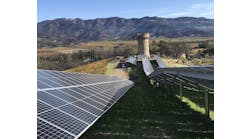How do you sell energy efficiency?
Mark Jewell, author of “Selling Energy: Inspiring Ideas That Get More Projects Approved!” offers ideas that he says are tried-and-true.
Try, for example, a strategy that he calls “The Three-Sentence Solicitation.”
First sentence: Give specific numbers and savings that similar clients have realized: “Over the last ten years we’ve worked with 12 hospitals like yours with 25 percent energy savings.”
Next, slap your forehead and comment that the business you’re selling to is similar to the ones that have seen this savings.
“Say, ‘As I was driving by your hospital I noticed that your lighting was the same system we have removed from our clients’,” Jewell explains.
Third sentence: “If you care to explore how we did this, I’m open to a conversation.”
It’s a soft sell, and it works, he says.
Another strategy is to gather success stories and teach sales people how to use them effectively in their sales efforts.
“Tell them to contribute five stories using the product or service. A brief story,” he says. The story should focus on an energy efficiency provider’s client’s successes using a product or service.
For example, a company in Portland that did a lighting retrofit increased sales by 20 percent because people could see products better and felt more comfortable in the space.
“These stories should be said in 7 to 15 seconds,” he says. “This is much more interesting than a brochure.”
It takes some effort to teach sales people to sell energy efficiency this way, Jewell says. The sales people need to have lots of stories at their fingertips.
The sales manager should ask all the sales people to write down success stories, and should then put them in a spreadsheet to share. The stories should be categorized by product and include the author’s contact information.
The company should pass out the stories and, in particular, ask new sales people to read them and memorize them.
“People who take the tips and do it actually prosper. It takes discipline and focus to collect stories and actually put them in spreadsheet,” says Jewell.
The key, he stresses, is to make the stories short and pithy. Include statistics –how much savings, the client’s square footage, and other information that makes the story come alive.
“‘We’ve done a lot of business’ is not a good thing to say. Say, ‘We’ve worked with 10 hospitals in 10 years. The average savings is 25 percent,'” he advises.
How do you help sales people remember all this information?
“Create a cheat sheet, laminate it and put it on clipboard,” he says.
The benefits will be worth the effort, Jewell promises.
Follow us on Twitter @EfficiencyMkts.






